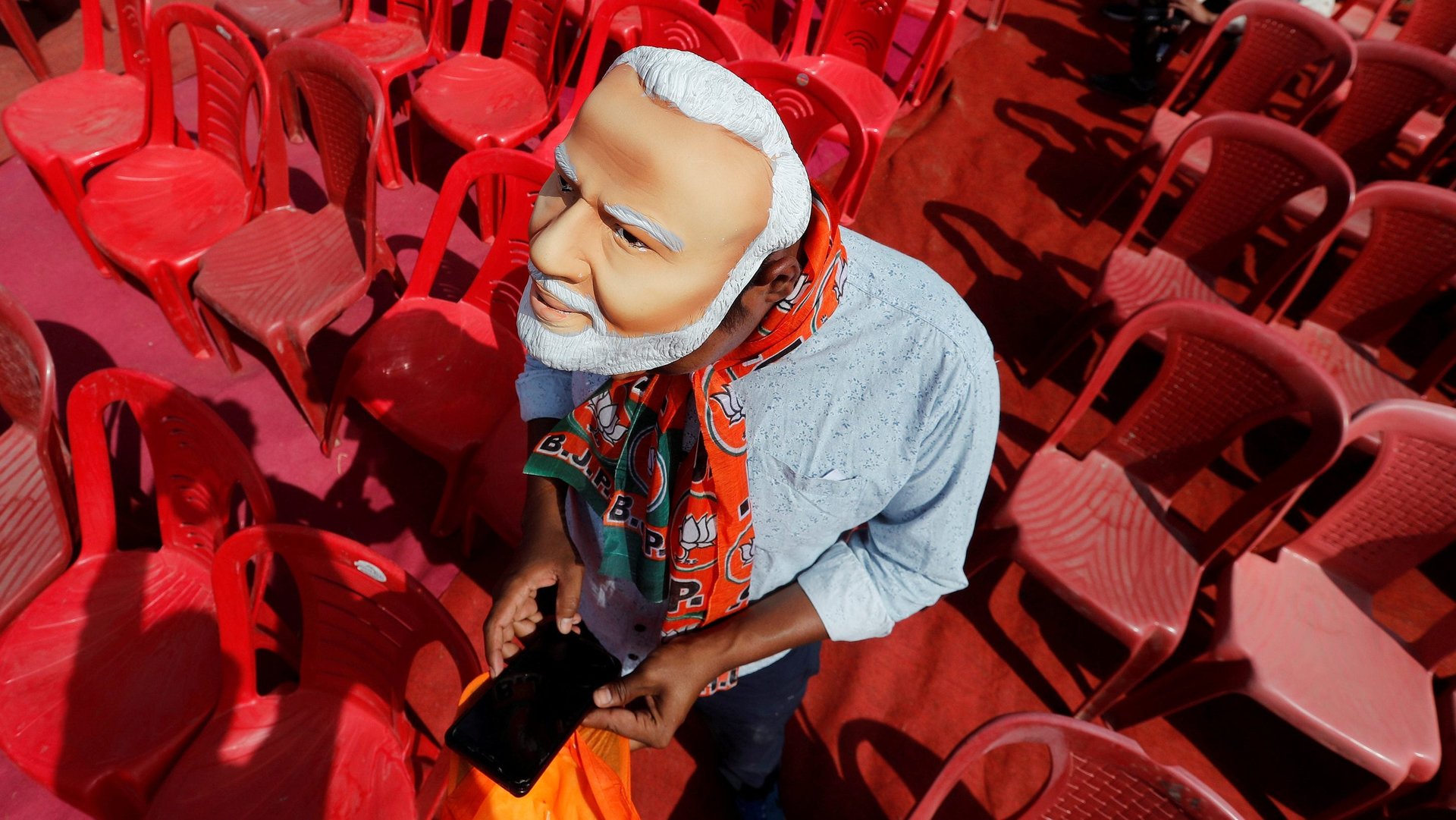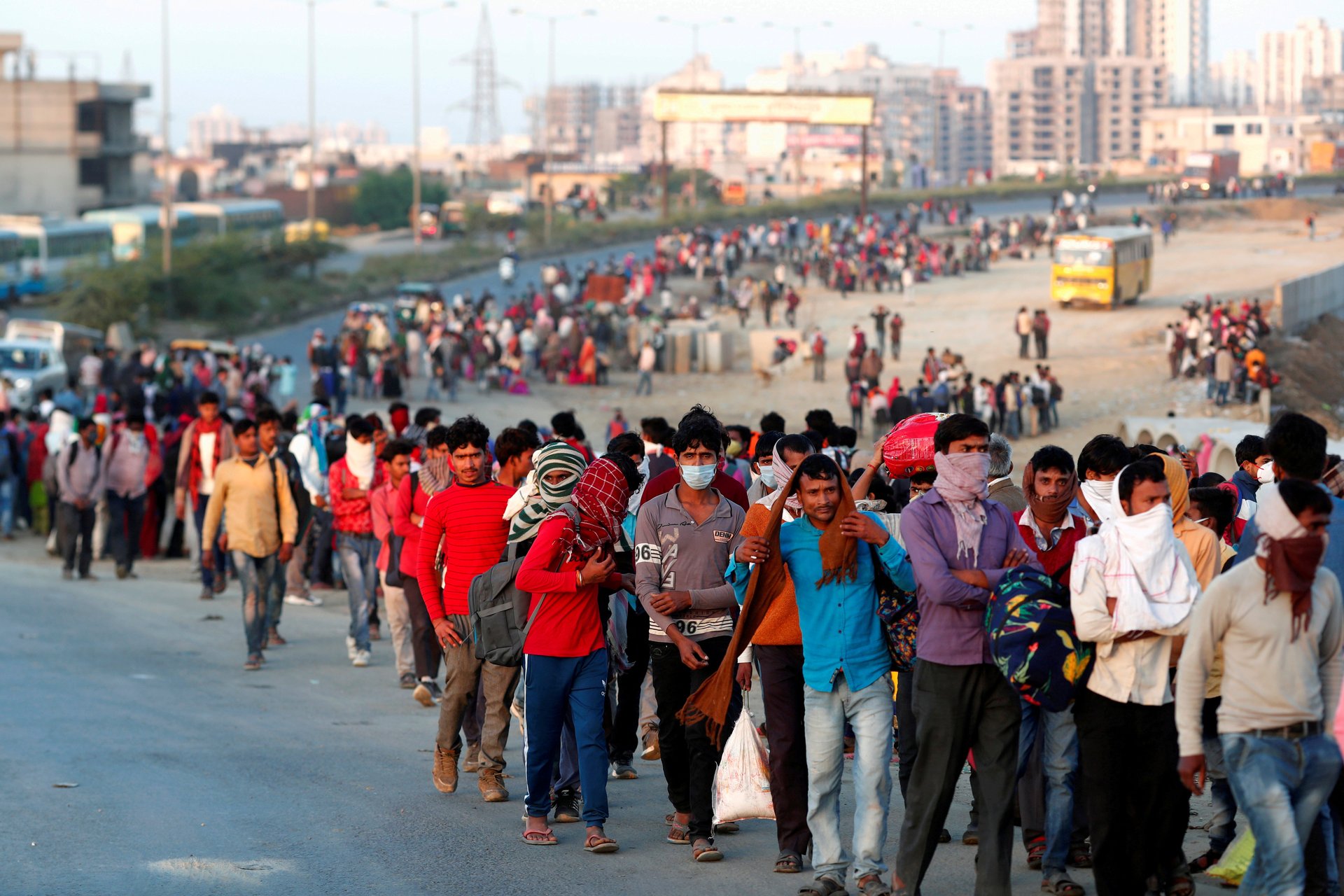Indian voters reward Modi’s BJP despite covid mishandling and a haphazard lockdown
There have been murmurs in recent weeks of prime minister Narendra Modi’s Bharatiya Janata Party (BJP) losing its grip over Indian voters following the alleged mishandling of the pandemic over the past two years. All eyes were on elections held in five states, especially Uttar Pradesh, over the past month.


There have been murmurs in recent weeks of prime minister Narendra Modi’s Bharatiya Janata Party (BJP) losing its grip over Indian voters following the alleged mishandling of the pandemic over the past two years. All eyes were on elections held in five states, especially Uttar Pradesh, over the past month.
As results poured in today (March 10), the murmurs were firmly silenced.
Trends mid-way through the counting of votes showed the party romping home in at least four—Uttar Pradesh, Uttarakhand, Goa, and Manipur—of the five states. In Punjab, the Aam Aadmi Party (AAP) seemed to have emerged as a strong alternative to mainstream political parties, with the year-long farm protests seeming to have worked in its favour more than for any other entity.
Yet, it is not like the BJP did not face a backlash. In Uttar Pradesh, for instance, the party was set to lose more than 50 seats from its previous tally. However, that simply may not be enough to dislodge it from power. In Uttarakhand, too, it may lose between 10 and 15 seats, yet form a government.
The results, overall, were in line with forecasts made by pollsters in the run-up to vote-counting.
What did not matter for India’s voters
Nothing spoke more loudly about the government’s mishandling of the pandemic than images of mass pyres and bodies buried in river beds and flowing downstream in Uttar Pradesh—India’s most populous state and, politically, the most significant. The main opposition there, the Samajwadi Party, was expected to give Modi’s outfit tough competition.
The trends have, however, belied those predictions, with the BJP now on its way to a comfortable majority and retaining Uttar Pradesh, although the vote-counting was still on as last reports came in.
Nothing—a botched up Covid-19 management, a monstrous oxygen crisis, mass deaths, a poorly-thought-out lockdown that led to untold miseries and economic woes—seemed to have shaken the voters’ confidence in the BJP as much as the opposition would have wanted them to.
The national lockdown, the world’s biggest, battered the struggling Indian economy and sparked unprecedented internal reverse-migration, especially from Uttar Pradesh and Bihar. Hundreds of unskilled labourers and their families were seen walking thousands of kilometres in desperation immediately after the lockdown was announced. Many even died during these arduous journeys.

Neither did a raging unemployment crisis make a dent. Hundreds of students have been protesting in northern India over delays in recruitment to various state-owned entities.
Political observers have attributed this steadfast support to the BJP to several reasons.
These include a lack of strong political alternatives, Modi’s enduring charisma (he was camped in Uttar Pradesh, seeking votes even after the Russia-Ukrain war broke out), the power of the party’s Hindu nationalist narrative that transcends regional or caste affiliations, and even religious polarisation.
Both Modi and his party will now march towards the 2024 general election with fresh wind under their wings.